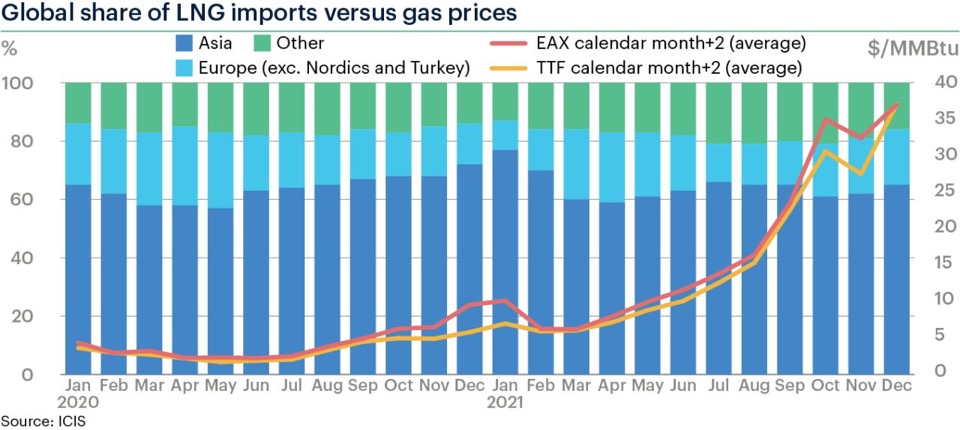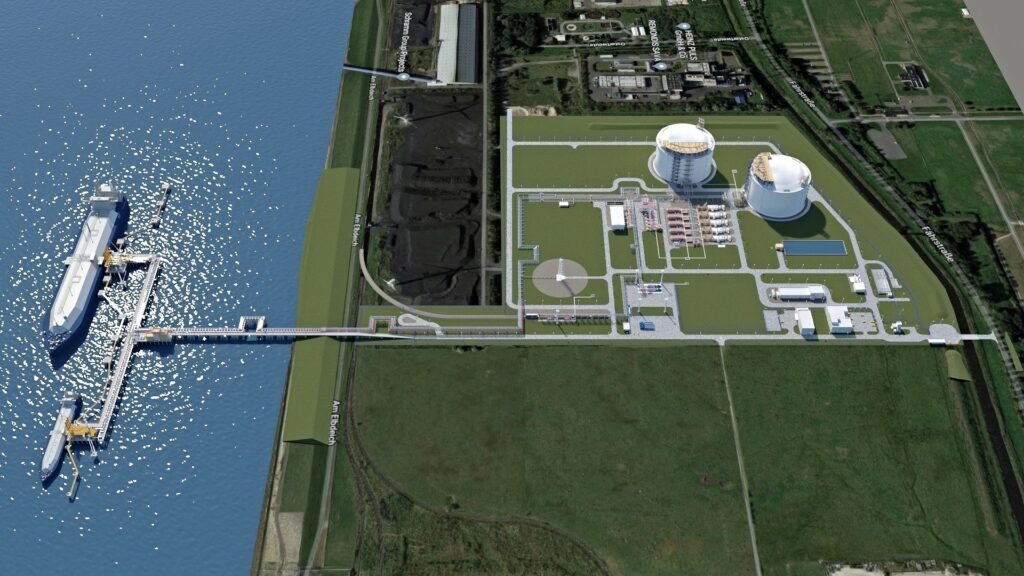

European gas prices rebounded strongly yesterday, inflated by the rise in the risk premium on the Ukrainian crisis.
Indeed, after President Putin recognized eastern Ukraine’s Donetsk and Luhansk regions as breakaway states, Europe and the USA have decided to apply a series of sanctions against Russia.
In particular, German Chancellor Scholz said that the Nord Stream 2 gas pipeline could not now be certified. The rise in Asia JKM prices (+7.61% on the spot, to €77.351/MWh) helped accompany the bullish momentum. On the spot pipeline supply side, Norwegian flows weakened slightly yesterday, averaging 340 mm cm/day, compared to 344 mm cm/day on Monday. Russian supply was slightly higher, averaging 185 mm cm/day, compared to 182 mm cm/day on Monday.
At the close, NBP ICE March 2022 prices increased by 17.460 p/th day-on-day (+10.06%), to 190.990 p/th. TTF ICE March 2022 prices were up by €7.23 (+9.96%), closing at €79.789/MWh. On the far curve, TTF ICE Cal 2023 prices were up by €5.44 (+10.53%), closing at €57.026/MWh.
TTF ICE March 2022 prices closed yesterday around the 5-day High target. They are trading above this level this morning, a move that can no longer be considered as arising from the normal market volatility.
Indeed, a real bullish trend is building, as shown by the upward slope of the 5-day average. In the very short term, prices could rise towards the 20-day High target. Note that this level has a fundamental meaning.
Without Nord Stream 2 (so, very little hope of having additional Russian gas volumes), the European gas balance will continue to need to limit gas demand in the power generation sector (ie to maintain gas prices above coal switching levels) for sure, but also to replace gas with oil products wherever possible.
The spot gasoil substitution range is currently estimated between €91/MWh and €110/MWh. The bad news is that the Ukrainian crisis also leads this gasoil range to move upwards.
Source: EnergyScan













